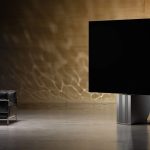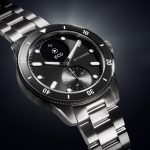When it comes to printing HP has already demonstrated its prowess in the home and the office, but it also has a unique printer for building sites and its 3D printing is also being used in the running shoe market.
Printing is still essential in the home and in small to medium businesses and HP has already created solutions like Instant Ink delivery to ensure you’re never short of ink.
This service has now also been extended to paper, so you always have what you need and are never caught out when you need to print.
Sustainability is important and HP is closing the loop with its new EvoMore printers which uses recycled materials to create the printer itself along with consumables like ink and toner cartridges.
But printing isn’t just limited to a home or office using ink and paper.
HP is also using its printer technology on worksites and its 3D printing technology is also being utilised to create running shoes.
HP SITEPRINT
HP SitePrint is a robot printer designed for the construction industry to print site layouts to an accuracy of 3mm.
Normally a builder would look at a set of plans and chalk out the layout or use a plum line to understand where the framework needs to go.
The HP SitePrint increases the accuracy of the layout on site and saves a lot of time and manpower when compared to manual layout techniques which is up to 10 times slower than HP SitePrint.
This ability to automate part of the building process will help improve efficiency and productivity.
“On our first day with the device, we did a competition between SitePrint and a manual layout team of four people. The HP solution laid out seven or eight rooms in the time it took the manual team to do two or three,” recalls Gerardo Rivera, COO, L5 Drywall Inc.
“With HP SitePrint, we’ve been able to eliminate mistakes and move weeks ahead in our schedule.”
HP SitePrint uses a camera, sensors and GPS to accurately print the layout and text on concrete slabs and other surfaces and has obstacle avoidance.
The layouts used by HP SitePrint can be generated by CAD (computer aided design) and other layout management tools that are all stored and accessed from the cloud.
3D PRINTED RUNNING SHOES
HP has formed a partnership with Brooks Running to design and engineer the new Brooks Exhilarate-BL which includes a 3D printed midsole that offers a supportive yet bouncy feel.
HP and Brooks Running took its biomechanical research and looked at the ways technology could optimise the design and performance of the running shoes.
The result was adopting HP’s Multi Jet Fusion 3D printing technology to produce the midsole which has a lattice construction made of out of a polymer to deliver higher energy return than 90 per cent of the midsoles currently on the market today.
Brooks will release a limited number of the new Exhilarate-BL running shoes for a test program among Brooks Wear Testers and the Brooks Run Club loyalty members.
“Using HP’s 3D printing technology has allowed our design team to fine-tune elements of the midsole right down to the millimetre in ways that wouldn’t have otherwise been possible,” says Nikhil Jain, director of footwear product line management and BlueLine at Brooks.
“As a brand rooted in the science that every individual has a unique motion path, we’re just scratching the surface in terms of how we can change the underfoot experience and use 3D printing to deliver a premium, performance run experience with the potential for greater optimization.”
The other benefit of using 3D printed technology is increased sustainability by using less materials during production.
“As a brand, we are focused on doing our part to ensure the shoes that we are building take a lot less energy and virgin material to manufacture,” Jain says.
“And from a sustainability perspective we are learning how 3D printing can help us on that journey.”
HP 3D printing is already being used across multiple industries including medicine where HP can create prosthetic sockets, ankle foot orthoses and paediatric cranial helmets.
Some John Deere tractors include 3D printed engine parts manufactured using HP’s Metal Jet S100 solution.
* Stephen Fenech travelled to Palo Alto as a guest of HP











